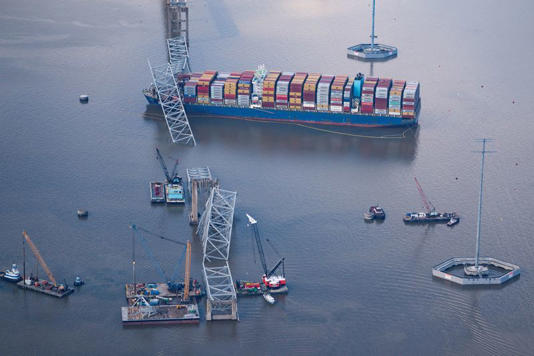The recent collapse of the Francis Scott Key Bridge in Baltimore, Maryland, has sent shockwaves through the shipping industry, disrupting vital maritime operations and posing significant challenges to the region’s economy. However, amidst the devastation, there is hope on the horizon as recovery efforts are underway to restore port access and resume commercial shipping. This article explores the impact of the bridge collapse on Baltimore’s shipping infrastructure, the progress of recovery efforts, and the implications for the future of maritime operations in the region.
The Bridge Collapse: A Devastating Blow to Shipping: On March 26, 2024, the fully loaded container ship Dali collided with the Francis Scott Key Bridge, resulting in its collapse and blocking the main channel to the Port of Baltimore. The incident, which claimed the lives of six road workers and caused extensive damage, has paralyzed maritime traffic and disrupted critical supply chains that rely on the port for the transportation of goods.
The Immediate Response and Recovery Efforts: In response to the bridge collapse, the U.S. Army Corps of Engineers and other agencies mobilized emergency response teams to assess the situation and develop a plan for recovery. Auxiliary channels were opened to facilitate the movement of emergency vessels, but major cargo ships remained stranded due to shallow depths. Salvage crews are currently working to remove debris from atop the Dali and clear the harbor, a process that is essential for restoring port access.
Timeline for Recovery: Despite the challenges posed by the wreckage and the complexity of the salvage operation, progress is being made towards reopening the port. The Army Corps of Engineers has announced plans to open a new channel to the Port of Baltimore by the end of April, allowing for the passage of some roll-on/roll-off vessels. By the end of May, port access is expected to be restored to full capacity, with a wider and deeper navigation channel accommodating major cargo ships.
Implications for the Shipping Industry: The collapse of the Francis Scott Key Bridge has underscored the vulnerability of maritime infrastructure and highlighted the need for robust safety measures and emergency preparedness protocols. The incident has also exposed the reliance of regional and national supply chains on the Port of Baltimore, raising concerns about the resilience of the shipping industry in the face of unexpected disruptions.
Government Response and Funding: In light of the severity of the situation, the Biden administration has allocated emergency funding for recovery efforts and pledged to seek additional support from Congress for the rebuilding of the bridge. The swift response from federal authorities underscores the importance of addressing infrastructure vulnerabilities and ensuring the continuity of maritime operations.
Rebuilding and Resilience: As Baltimore navigates the aftermath of the bridge collapse, stakeholders in the shipping industry are focused on rebuilding infrastructure, enhancing safety measures, and fortifying resilience against future disasters. The incident serves as a sobering reminder of the fragility of maritime infrastructure and the importance of proactive planning and investment in safeguarding critical transportation networks.
The collapse of the Francis Scott Key Bridge has had far-reaching implications for Baltimore’s shipping industry, disrupting operations and causing widespread economic impact. However, with concerted efforts and coordinated action, the city is on the path to recovery, with plans underway to restore port access and resume commercial shipping. As Baltimore rebuilds and strengthens its maritime infrastructure, lessons learned from this crisis will inform future efforts to enhance resilience and ensure the continued vitality of the region’s shipping industry.
